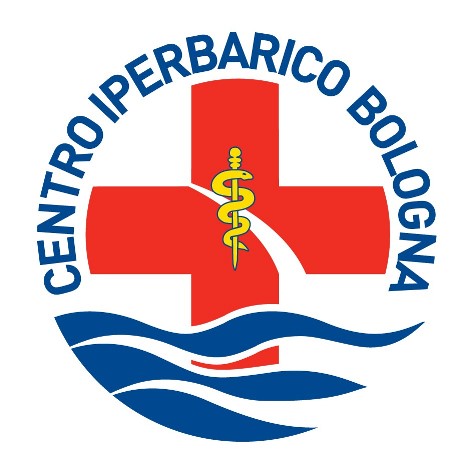Osteonecrosi asettica o vascolare
Definizione
Necrosi cellulare ossea causata da compromissione dell’apporto ematico che comporta perdita dell’integrità strutturale dell’osso
Trattamento di prima linea dopo la diagnosi
Scarico ponderale
Criteri diagnostici di ammissione
Osteonecrosi testa del femore Steimberg 1 – 3
Osteonecrosi altre sedi nei casi in cui è conservato il profilo corticale
Fratture e traumi a rischio
| STAGE | CRITERIA |
| STEINBERG CLASSIFICATION | |
| 0 | Normal or non-diagnostic X-Ray, MRI or Bone Scan |
| I | Normal X-Ray – abnormal MRI or Bone Scan |
| A – Mild (< 15% of head) | |
| B – Moderate (15% – 30%) | |
| C – Severe (> 30%) | |
| II | Sclerotic changes or cystic lesions |
| A – Mild (< 15%) | |
| B – Moderate (15% – 30%) | |
| C – Severe (> 30%) | |
| III | Subchondral collapse without flattening |
| A – Mild (< 15% of articular surface) | |
| B – Moderate (15% – 30%) | |
| C – Severe (> 30%) | |
| IV | Flattening of the femoral head |
| A – Mild (< 15% of surface and < 2 mm depression) | |
| B – Moderate (15% – 30% of surface or 2-4 mm depression) | |
| C – Severe (> 30% of surface and > 4 mm depression) | |
| V | Joint narrowing and/or acetabular involvement |
| A – Mild | |
| B – Moderate | |
| C – Severe | |
| VI | Advanced degenerative changes |
Valutazione clinica, strumentale e anamnestica all’ingresso
- Valutazione del dolore mediante VAS
- Radiografia
- RMN – Scintigrafia Ossea (in casi dubbi)
Possibili terapie associate
- Alendronati, Bisfosfonati, Calcio,Vit. D3;
- Terapia del dolore
Monitoraggio della terapia
- Follow up clinico: VAS a riposo pre e post OTI
- Follow up radiologico: RM pre e post OTI
Criteri di esclusione
- Osteonecrosi Testa Femore stadio STEINBERG > 3
- Osteonecrosi in sedi diverse dalla testa del femore con alterazione del profilo corticale osseo
Beneficio atteso
- Riduzione del dolore
- Miglioramento del quadro RM
- Riduzione della % di protesizzazione
Trattamenti alternativi
- Artroprotesi
Schema di trattamento
| DIAGNOSI | N. max trattamenti 90 | Osservazioni |
| Osteonecrosi asettica | 1° ciclo 50 sedute2° ciclo 40 sedute | · Valutazione clinica a tempo 0, 30, 50, 70, 90· Valutazione radiologica a tempo 0, 50, 90 |
| Fratture e traumi a rischio | 30 sedute in fase sub acuta | · Valutazione clinica e radiologica a tempo 0, 30. |
Bibliografia utilizzabile ai fini dell’individuazione delle prove di efficacia
No revisioni Cochrane o altre revisioni sistematiche
No Clinical evidence o UpToDate
HTA
| Institut fuer Qualitat und Wirtschaftlichkeit im Gesundheitswesen. Hyperbaric oxygen therapy for idiopathic osteonecrosis of the femoral head in adults. Cologne: Institut fuer Qualitaet und Wirtschaftlichkeit im Gesundheitswesen (IQWiG). 2007 | Worldwide, data on only about 100 to 200 patients have been published concerning the therapeutic effects of hyperbaric oxygen therapy for idiopathic osteonecrosis of the femoral head in adults. Due to the complete lack of relevant studies, a widespread use of this therapy outside the setting of clinical trials does not seem justified. There is no evidence of a benefit of this treatment. |
The Journal of Arthroplasty Vol. 25 No. 6 Suppl. 1 2010 –
Hyperbaric Oxygen Therapy in Femoral Head Necrosis
Enrico M. Camporesi, MD,* Giuliano Vezzani, MD,y Gerardo Bosco, MD, PhD,z Devanand Mangar, MD,§ and Thomas L. Bernasek, MD∥
Abstract: We evaluated hyperbaric oxygen (HBO) therapy on a cohort of patients with femoral head necrosis (FHN). This double-blind, randomized, controlled, prospective study included 20 patients with unilateral FHN. All were Ficat stage II, treated with either compressed oxygen (HBO) or compressed air (HBA). Each patient received 30 treatments of HBO or HBA for 6 weeks.
Range of motion, stabilometry, and pain were assessed at the beginning of the study and after 10, 20, and 30 treatments by a blinded physician. After the initial 6-week treatment, the blind was broken; and all HBA patients were offered HBO treatment. At this point, the study becomes observational. Pretreatment, 12-month. and 7 year-follow-up magnetic resonance images were obtained. Statistical comparisons were obtained with nonparametric Mann-Whitney U test. Significant pain improvement for HBO was demonstrated after 20 treatments. Range of motion improved significantly during HBO for all parameters between 20 and 30 treatments. All patients remain substantially pain-free 7 years later: none required hip arthroplasty. Substantial radiographic healing of the osteonecrosis was observed in 7 of 9 hips. Hyperbaric oxygen therapy appears to be a viable treatment modality in patients with Ficat II FHN. Keywords: hyperbaric oxygen therapy, femoral head necrosis, hip arthroplasty. © 2010 Published by Elsevier Inc.
